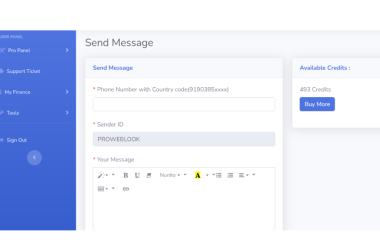Introduction.
URL Redirect Checker: In the vast expanse of the internet, where information flows freely and websites constantly evolve, URLs play a crucial role in navigation. Yet, beneath the surface, lies a complex web of redirects that determine how users reach their desired destinations. This is where URL Redirect Checker tools come into play, unraveling the intricate pathways of redirection and ensuring a seamless browsing experience. In this article, we delve into the intricacies of URL redirection, the importance of redirect checkers, and how they function to maintain the integrity of the web.
Understanding URL Redirection.
URL redirection, also known as URL forwarding, is the technique used to send a user from one URL to another. This process is commonly employed for various purposes, such as website maintenance, content consolidation, and search engine optimization (SEO). There are several types of redirects, each serving a different purpose:
1. 301 Redirect: This is a permanent redirect, indicating that the original URL has moved permanently to a new location. It is crucial for preserving SEO value and ensuring that search engines recognize the new URL as the authoritative source.
2. 302 Redirect: Unlike the 301 redirect, the 302 redirect is temporary and indicates that the resource has moved temporarily to a different URL. Search engines may continue to index the original URL instead of the redirected one.
3. Meta Refresh: This is a client-side redirect method that uses an HTML meta tag to redirect users to a different URL after a specified time interval. While not as efficient as server-side redirects, it is still used in certain scenarios.
4. Canonical Redirect: Canonicalization is the process of picking the best URL when there are several choices. A canonical redirect ensures that all variations of a URL point to a single, preferred version, thus avoiding duplicate content issues.
The Importance of URL Redirect Checker.
In the dynamic landscape of the internet, URLs are prone to changes due to website restructuring, content updates, or domain migrations. However, improper redirection can lead to broken links, loss of SEO value, and a poor user experience. This is where URL redirect checker tools come into play, offering a comprehensive solution to identify and manage redirects effectively.
Here are some key reasons why URL redirect checkers are indispensable:
1. Detecting Broken Links: Over time, websites may undergo changes that result in broken links due to outdated URLs or improper redirects. URL redirect checkers scan websites to identify broken links and redirect loops, allowing webmasters to rectify them promptly.
2. Preserving SEO Value: Search engines rely on redirects to understand the relationship between old and new URLs. By ensuring proper redirection, website owners can preserve the SEO value accumulated by the original URL and prevent loss of rankings.
3. Enhancing User Experience: Broken links and redirect loops can frustrate users and discourage them from exploring a website further. URL redirect checkers help maintain a smooth browsing experience by ensuring that users are directed to the intended content without interruptions.
4. Mitigating Security Risks: Malicious actors may exploit improper redirects to deceive users or redirect them to phishing websites. URL redirect checkers help identify and mitigate security risks associated with unauthorized or malicious redirects.
How URL Redirect Checkers Work.
URL redirect checker tools employ various techniques to analyze and evaluate redirects across websites. While the specific features may vary depending on the tool, here are the common functionalities offered by most URL redirect checkers:
1. Link Crawling: URL redirect checkers crawl through the website’s structure to discover all internal and external links. This comprehensive scanning process ensures that no redirect goes unnoticed, even in complex website architectures.
2. Redirect Detection: Once the links are crawled, the redirect checker identifies any redirects present in the URL structure. It distinguishes between different types of redirects and provides detailed insights into their configurations.
3. HTTP Status Code Analysis: Each redirect is associated with an HTTP status code, indicating the nature of the redirect (e.g., 301 for permanent redirect, 302 for temporary redirect). The URL redirect checker analyzes these status codes to determine the effectiveness and correctness of the redirects.
4. Redirect Chain Analysis: In some cases, a series of redirects, known as redirect chains, may lead to the final destination URL. URL redirect checkers trace these chains and highlight any inefficiencies or issues within them.
5. Reporting and Analytics: Finally, URL redirect checkers generate comprehensive reports and analytics, summarizing the findings and providing actionable insights for website optimization. This includes identifying broken links, redirect loops, and opportunities for improving SEO.
Choosing the Right URL Redirect Checker.
With numerous URL redirect checker tools available in the market, it’s essential to choose one that aligns with your specific requirements and preferences. Here are some factors to consider when selecting a URL redirect checker:
1. Features and Functionality: Evaluate the features offered by the redirect checker, such as link crawling capabilities, redirect detection accuracy, and reporting tools. Look for advanced functionalities that streamline the redirection management process.
2. Ease of Use: A user-friendly interface and intuitive navigation are crucial for maximizing the utility of the URL redirect checker. Ensure that the tool offers a seamless user experience and provides clear instructions for analyzing and managing redirects.
3. Compatibility and Integration: Consider the compatibility of the URL redirect checker with your existing website platform and other tools in your digital ecosystem. Look for integration options that facilitate seamless data exchange and workflow automation.
4. Performance and Reliability: Assess the performance and reliability of the redirect checker, including its speed, accuracy, and uptime. Choose a tool that delivers consistent results and can handle large-scale website analysis without compromising efficiency.
5. Cost and Value: Finally, evaluate the cost-effectiveness of the URL redirect checker in relation to the value it provides. Compare pricing plans, subscription models, and additional features to determine the best investment for your budget and business needs.
Conclusion.
URL redirect checker tools play a vital role in maintaining the integrity and functionality of websites by identifying and managing redirects effectively. By detecting broken links, preserving SEO value, enhancing user experience, and mitigating security risks, these tools empower website owners to optimize their online presence and ensure a seamless browsing experience for users. As the internet continues to evolve, URL redirect checkers will remain indispensable tools for navigating the complex web of redirection and ensuring that users reach their intended destinations with ease.
Visit Proweblook for more Web API tools. More resources can be found on our Github page, Social Channels are Twitter, Facebook & Youtube.








